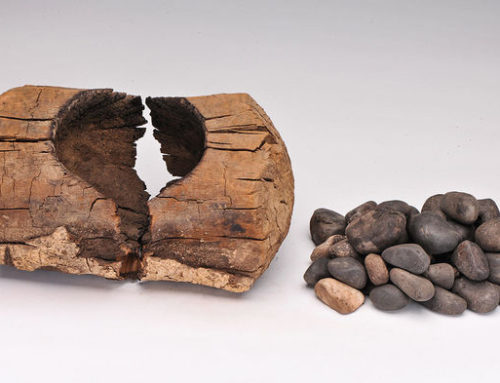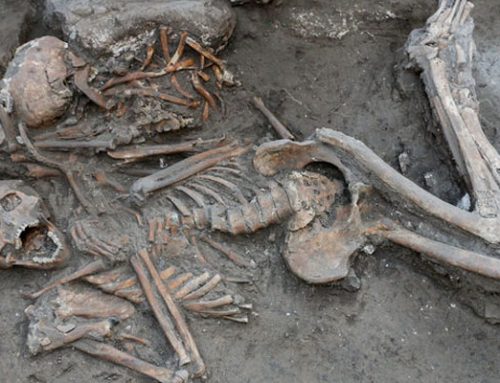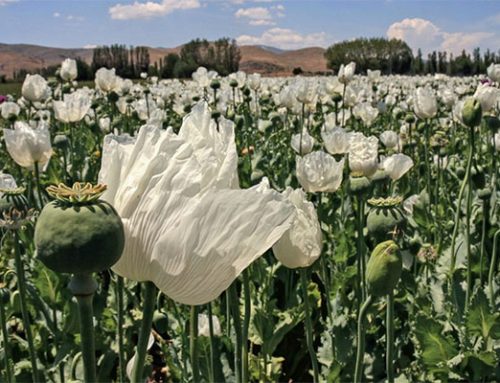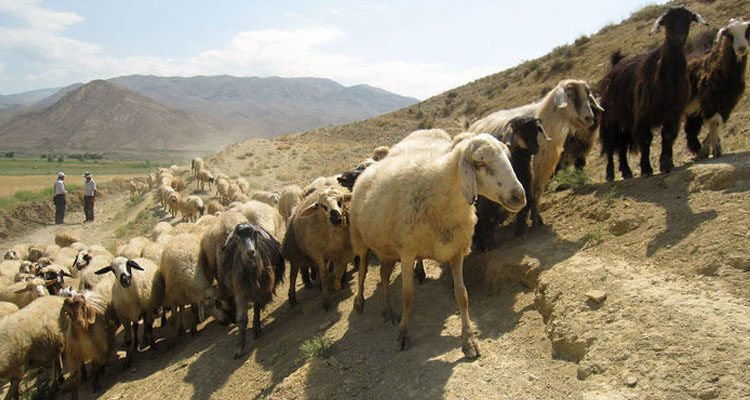
Nearly 4000 years ago, in the royal palace of the Mesopotamian city of Mari, King Zimri-Lim awoke from a nightmare in which nomads from the surrounding desert had captured his beloved wife.
Archaeologists have long thought that that Zimri-Lim’s fear, described in a cuneiform text, reflects the key roles that nomads played in early urban life. These mobile marauders, powerful enough to trouble the sleep of rulers, were tolerated for the exotic goods they carried from faraway places. Traveling hundreds of kilometers in search of grazing land, pastoralists have long been seen as likely architects of the long-distance trade networks that helped spur the rise of the world’s first civilization around 3000 B.C.E., in what is now Iraq.
Because physical traces of ancient pastoralists are often all but invisible, researchers relied heavily on comparative studies of 20th century Middle Eastern nomads in building this picture. But archaeologists are increasingly using new methods to read the faint clues left by ancient nomads. Armed with data from animal dung, bones, dental calculus, and plant remains, these researchers suggest herders mainly stuck close to and served the needs of specific urban areas, rather than migrating between far-flung cities. “They were not traveling long distances, so they are not the natural conduit for trade,” says Emily Hammer, an archaeologist at the University of Pennsylvania.
That assertion, which Hammer and archaeologist Ben Arbuckle of the University of North Carolina in Chapel Hill lay out in a forthcoming paper in the Journal of Archaeological Research, has touched off intense debate about how early urban life flourished. To Abbas Alizadeh of the University of Chicago in Illinois, who has spent decades studying pastoralists such as the Bakhtiari of southwest Iran, Hammer and Arbuckle “are completely wrong—I bet they’ve never even seen a nomad in their life.”
Archaeologists generally agree that not long after humans started farming in the Near East about 10,000 years ago, pastoralists began caring for newly domesticated sheep, goats, and cattle. But researchers debate just when these groups began to travel vast distances in a seasonal cycle to seek greener pastures.
Alizadeh and archaeologists such as Yale University’s Frank Hole assert that pastoralists on the fringes of Mesopotamia migrated hundreds of kilometers as early as 7000 B.C.E. They base this conclusion on the movements of modern pastoralists who drive flocks of sheep and goats up and down the steep valleys of the Zagros Mountains in Iraq and Iran. The researchers also point to excavations of seasonal villages and graves that hint at a prehistoric roving life.
Once the first urban areas arose, valuable stones, metals, and timber from Afghanistan, Iran, and Anatolia poured into southern Mesopotamia. By 2000 B.C.E., an organized trading system supplied materials from as far east as the Indus civilization and as far west as the Levant to the wealthy city-state of Ur. Although archaeologists have long thought nomadic herders were a key conduit, few early texts record who moved these goods. “Trade is textually almost invisible,” says Piotr Michalowski, a cuneiform specialist at the University of Michigan in Ann Arbor. “We don’t know how they got their stuff.”
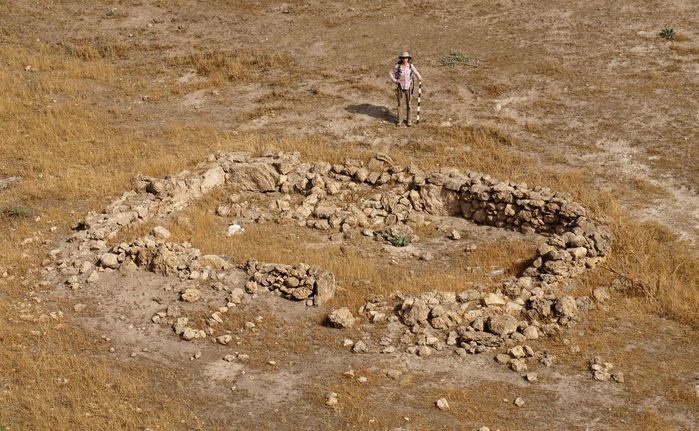
Archaeologist Emily Hammer examines stone foundations, a marker of ancient herding life, at a Turkish site where modern Kurdish pastoralists still pitch their tents.
The new techniques now suggest that before 1000 B.C.E., pastoralists in Jordan, Syria, Turkey, and Iran stayed too close to home to have served as international middlemen. At a site in Amman, for example, Cheryl Makarewicz, an archaeozoologist at Germany’s University of Kiel, analyzed sheep and goat tooth enamel dating to about 7000 B.C.E. for ratios of carbon and oxygen isotopes. Because those isotopes can reflect local soil and water, they provide a geographic fingerprint of where an animal grazed. She discovered that the animals fed in the vicinity, rather than in distant grasslands. At the 7000 B.C.E. town of Çatalhöyük in eastern Turkey, another team analyzed carbon and nitrogen isotopes from sheep and goat teeth collagen and found that there, too, the animals grazed nearby. Their dung also revealed that they ate more fodder than wild grass, a sign the animals lived mainly in pens rather than wandering long distances.
Later, as cities arose, Hammer and Arbuckle, along with archaeologist Dan Potts of New York University in New York City, argue that pastoralists stayed largely on the outskirts to meet urban demand for meat and milk, as well as the wool that helped drive the Mesopotamian textile industry. “There are livestock processing centers,” Hammer notes. “You can’t take the animals too far.”
If nomads weren’t the long-distance traders of the ancient world, most goods must have moved by other means—and discoveries in the past decade suggest one possibility. Archaeologists have found that cities and towns were far more common in the Bronze Age Middle East than once thought. That would have allowed trade to be sustained through social networks, created by royal marriages and traveling merchants, rather than nomads, Potts says.
Texts from around 1900 B.C.E. found at the Anatolian town of Kanesh describe how merchant families organized donkey caravans that crossed 1000 kilometers to reach Assur, a city south of today’s Mosul in Iraq. “These are urban people, and there is no reason to think this wasn’t going on in 3000 B.C.E. or even 3500 B.C.E.,” Potts adds. Michalowski agrees: “There were a lot of entrepreneurs, and trade seems to have been mainly in private hands. … You don’t have to invoke mobile pastoralists.”
Only when domesticated dromedary camels appeared in the first millennium B.C.E. did nomads begin long seasonal treks, Hammer, Arbuckle, and Potts say. “We are not denying pastoralists exist,” Hammer says. “Only that they were traveling long distances and living in tents. And we have the bones, the campsites, and the paleobotany to show this.”
Many of their colleagues remain unpersuaded. “If true, this is very revolutionary,” says Guillermo Algaze, an archaeologist at the University of California, San Diego. But he still thinks that mobile pastoralists were the glue that held together extensive trade networks in early urban societies. Steve Rosen, an archaeologist at Ben-Gurion University of the Negev in Beersheba, Israel, praises Hammer and Arbuckle’s approach. But he has found a string of archaeological sites in the Negev Desert indicating that, at least there, pastoralists used donkeys to cross more than 100 kilometers of harsh terrain as early as 3000 B.C.E.
New data from Mesopotamia, such as analyses of animal bones and dung from the renewed excavations at Ur, where Hammer has recently been working, could help settle the debate. Whether marauding nomadic tribes or local ruffians provoked Zimri-Lim’s nightmare may finally become clear.

